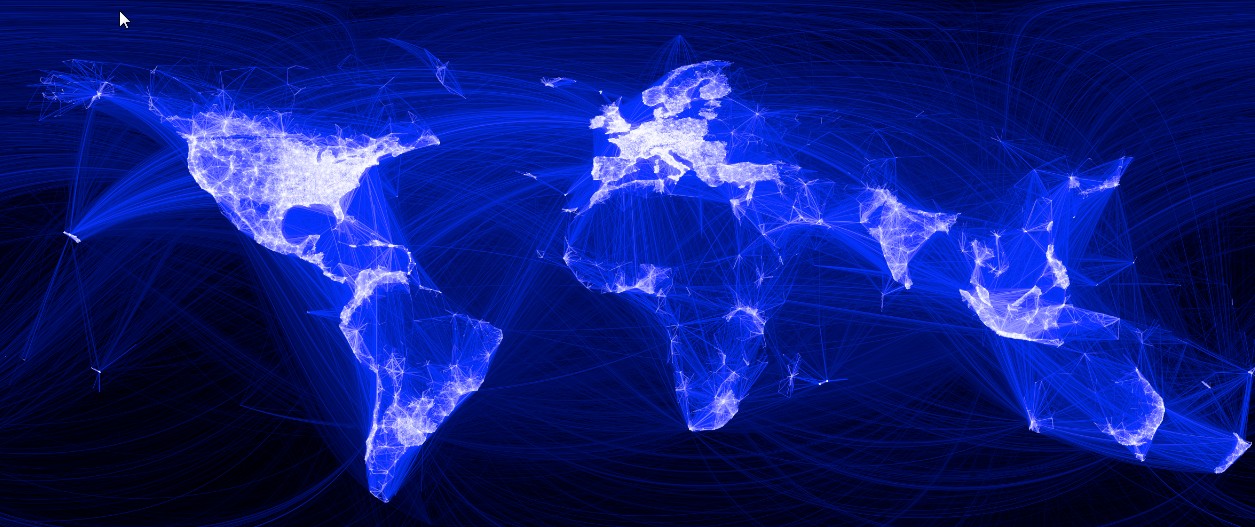OPINIONS
Date: 21 October 2020
(Re)defining connectivity
What exactly is connectivity? Is it just one of those trendy, abstract buzzwords that pop up from time to time and then, just as suddenly, fade away into the dusty archives of social science? Or does it deserve a distinct category in discussions on international politics? And how to capture the essence of such a complex topic and make it commonly understandable? These are questions that pundits and policy makers across the world are surely asking themselves with increasing frequency. But given all this interest, it may be surprising that there is still no single definition of connectivity, commonly agreed and cast in stone once and for all.

Strategic intent
One of the earliest attempts at a definition comes from the November 2017 meeting of the ASEM (Asia-Europe Meeting) Foreign Affairs Ministers. The meeting concluded that “Connectivity is about bringing countries, people and societies closer together. It facilitates access and is a means to foster deeper economic and people-to-people ties […] ASEM Connectivity covers all modes of transport [and also] institutions, infrastructure, financial cooperation, IT, digital links, energy, education and research, human resources development, tourism, cultural exchanges as well as customs, trade and investment facilitation”[1].
So far, so broad: this provides us with a good list of the elements that make up connectivity – but it still leaves questions unanswered. It provides the ‘what’, but is less clear about the ‘why’. Is there some omnipotent force, which sets connectivity in motion and leads states to submit to its benevolent momentum? I would make a more straightforward argument: states and non-state actors connect and disconnect themselves in line with their perceived strategic interests. The first critical element of connectivity, then, is strategic intent.
Geo-economic and geo-political tool
Political power today is a function relatively less of a state’s military capabilities and more of its economic potential. The foreign policy toolbox is therefore also evolving, to focus on measures with a more overtly economic character – a shift from geo-politics to geo-economics.
In today’s globalised economy, a country’s economic potential depends fundamentally on the nature of its connections with the rest of the world – in terms of density (many or few connections), diversity (many or few partners, modes and routes), and agency (defining one’s own rules or being subjected to someone else’s conditions for connecting). We have, then, a situation where connectivity defines economic potential, and economic potential defines political power. Here we have our second critical element of a definition: influence over connectivity is an essential modern foreign policy tool.
Strategic investment in infrastructure
A state’s decision to connect itself with others is embodied in the investments, which it makes in the infrastructure which actually realises that connection, both physical (roads, power lines, digital cables and satellites) and non-physical (cultural exchanges, research cooperation, customs facilitation etc.).
This is critical, because – besides their physical and economic benefits – investments also serve as a real-world transmission belt for the commercial interests, technological positioning, regulatory frameworks, and political narratives of the investor. They also create long-lasting dependencies, which can affect future economic and political decisions, with consequences for security.
And so here we have the third element of a definition: investment. Thus, connectivity – as a foreign policy tool – means implementing strategic intent through investments in infrastructure.
Product of connectivity
The EU is itself a product of connectivity. Our own internal connectivity policies, such as the TEN-T and TEN-E networks, have given the EU unique know-how in this field. We have managed to develop regulatory frameworks that encourage fair competition under the Single Market. In matters of connectivity, therefore, the EU has the credibility to promote our world-class regulatory frameworks, and to serve as a leading example of how to overcome national differences and to establish mutually beneficial interdependencies across economies.
A critical element of the EU approach is that investments should be made in a sustainable and transparent way. This provides a fourth, EU-specific defining element: from an EU perspective, a proper definition must therefore refer to sustainable connectivity.
This is what makes EU connectivity a positive agenda: our high standards, and our commitment to sustainability and transparency in infrastructure investment allows us to meet the development needs of partner countries at the same time as promoting our own commercial interests and systemic values. This also renders EU connectivity into an attractive and credible global alternative offer, which can form a fundamental part of the post Covid-19 recovery. In order to be effective, our regulatory offer needs to be accompanied by financial support for real infrastructure investment, which will help us to build back our economies in a way that is fit for the 21st Century, and an efficient strategic communication that will make the EU connectivity brand recognisable worldwide.
Focus on the neighbourhood
Looking to the future, as we seek to deliver this investment – to implement our connectivity principles through concrete actions – it becomes necessary to translate our global principles into regional priorities.
The EU’s direct neighbourhood – the Western Balkans and Eastern Partnership countries – provide a natural focus. As Commission President Ursula von der Leyen highlighted in her first State of the Union speech earlier this month, the Western Balkans in particular are not simply “a stopover on the Silk Road”, but rather our neighbours, sharing our cultural heritage encapsulated within the very territory of the EU[2]. Similar can be said about the EU Eastern Neighbourhood too. The countries from both regions are of geographical proximity and geopolitical importance. These are also countries which – through negotiations of accession (in the case of the former group) and implementation of association or other similar agreements (in the case of the latter) – have already begun to achieve high levels of approximation with EU policies and legal frameworks, the famous acquis communautaire.
Connecting with countries, which may one day become EU Members or be closely integrated, is surely in the EU’s core strategic interest. The positive outcomes are all the greater given uncertain timelines for Western Balkans accession and the ongoing lack of political consensus over granting it to the Eastern Partnership countries. Delivering on an ambitious connectivity agenda in both regions could therefore serve as a pragmatic solution, which would pave the way for closer integration over time.
In the shorter term, these are obvious partners for the EU’s drive to diversify and shorten its supply chains, with the potential to generate business opportunities on both sides.
In any case, safeguarding resilience and economic wellbeing remains in the interests of both the EU and our direct neighbours – all the more so in a context of competing pressures from increasingly active third-country actors in the regions. This is a test for our credibility globally. Adopting the words of the HRVP, Josep Borrell “We cannot have ambitions to be global players if we cannot sort out problems at our own borders”[3].
Europe stronger connecting in the world
Indeed, it is the current Commission’s stated ambition for the Union to be global, to take on its geopolitical role and so to become stronger in the world. In a world of globalised and inter-connected economies and politics, connectivity is by far the best tool for achieving this goal.
Our partners and competitors have recognised this fact and have already unveiled their policies. To remain competitive globally, the EU and its Member States must now team up and muster our own strategic intent to connect the world through infrastructure. This is globalisation for the 21st century, and we must start with our closest neighbourhood.
And so to conclude, back to our first question: connectivity, a trendy buzzword, or a distinct transformative policy? To me there is no doubt: this is real, tangible, and will remain. Strategic and sustainable investment in infrastructure is at the core of international politics: connectivity is most definitely here to stay.
Marcin Kacperek is a Policy Officer to the Ambassador-at-Large for Connectivity in the European External Action Service. Views and opinions expressed in the text belong solely to the author, and do not necessarily represent or reflect the official position of the institution.
[1] https://www.consilium.europa.eu/media/31705/annex-i.pdf
[2] https://ec.europa.eu/info/sites/info/files/soteu_2020_en.pdf
[3] https://www.ft.com/content/4b564d78-e919-11e9-a240-3b065ef5fc55
All texts published by the Warsaw Institute Foundation may be disseminated on the condition that their origin is credited. Images may not be used without permission.

















